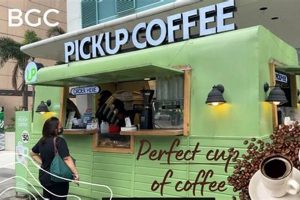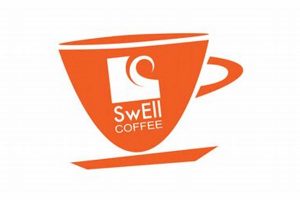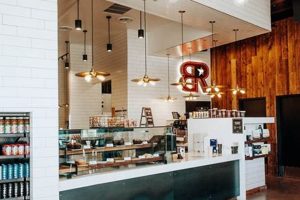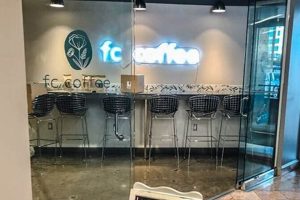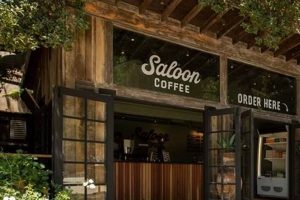The action of procuring coffee beans specifically originating from Colombia represents a significant segment within the global coffee trade. This activity encompasses various channels, ranging from direct engagement with Colombian coffee farmers or cooperatives to purchasing through established importers, distributors, or retail outlets specializing in premium or ethically sourced coffees. A consumer might, for instance, choose to acquire a bag of single-origin Arabica beans labeled as “Colombian Supremo” from a specialty coffee roaster.
Acquiring coffee from this origin is valued for several reasons. Colombia’s geographical location, characterized by high altitudes, volcanic soil, and consistent rainfall, creates ideal growing conditions conducive to producing high-quality Arabica beans known for their balanced acidity, distinct aroma, and rich flavor profile. This results in a globally recognized and sought-after product, contributing significantly to the Colombian economy and supporting the livelihoods of countless coffee-growing families. Historically, the production and export of coffee has been a cornerstone of Colombia’s economic and cultural identity.
The following sections will delve into the specific characteristics of Colombian coffee, explore diverse purchasing options, and provide guidance on selecting the most suitable beans to match individual preferences. It will further address factors such as bean origin, processing methods, and brewing techniques that contribute to the final cup quality, offering a comprehensive understanding of the factors to consider when investing in coffee from this renowned origin.
Considerations for Procuring Coffee from Colombia
Engaging in the procurement of coffee originating from Colombia necessitates careful evaluation to ensure quality, authenticity, and ethical sourcing. The subsequent guidelines offer insights into optimizing the selection process.
Tip 1: Verify Origin Authenticity: Prioritize certifications such as “100% Colombian Coffee” or Protected Designation of Origin (PDO) seals. These serve as an initial indicator of genuine Colombian beans, although further investigation may be warranted to confirm the coffee’s provenance.
Tip 2: Evaluate Bean Grade and Variety: Familiarize yourself with the grading system, which often includes classifications like Supremo, Excelso, and UGQ. Understand that different varieties (e.g., Typica, Castillo, Caturra) possess distinct flavor characteristics. The chosen grade and variety should align with the intended taste profile.
Tip 3: Scrutinize Roast Level: The roast level significantly impacts the final flavor. Lighter roasts tend to highlight the coffee’s inherent acidity and nuanced flavors, while darker roasts offer a bolder, more robust taste. Select a roast level that corresponds to the preferred sensory experience.
Tip 4: Investigate Processing Method: Coffee cherries undergo various processing methods, including washed, natural, and honey processed. Each method imparts unique characteristics to the final product. Washed coffees generally exhibit cleaner, brighter profiles, while natural coffees often display more pronounced fruit notes.
Tip 5: Assess Bean Appearance and Aroma: Visually inspect the beans for uniformity in size and color. A consistent appearance typically indicates higher quality. Evaluate the aroma; a fresh, pleasant fragrance suggests optimal storage and handling.
Tip 6: Consider Ethical Sourcing: Seek out coffee that is certified by reputable organizations such as Fair Trade or Rainforest Alliance. This ensures that the producers receive fair compensation and that environmentally sustainable practices are employed.
Tip 7: Sample Before Committing: Whenever feasible, request a sample before making a bulk purchase. This allows for a direct assessment of the coffee’s flavor, aroma, and overall quality.
By adhering to these guidelines, one can make informed decisions when seeking coffee sourced from Colombia, maximizing the likelihood of acquiring a product that meets both quality expectations and ethical considerations.
The subsequent sections will address potential challenges and provide insights into optimizing the brewing process to fully appreciate the qualities of coffee sourced from Colombia.
1. Origin Verification
Origin verification serves as a cornerstone of responsible coffee acquisition, particularly when seeking Colombian coffee. The geographical specificity associated with Colombian coffee dictates its unique flavor profile and quality characteristics, arising from the region’s distinct climate, altitude, and soil composition. Untruthful labeling or misrepresentation undermines the integrity of the Colombian coffee industry and deprives consumers of the expected sensory experience. Consequently, confirming the authenticity of the coffee’s origin becomes a critical step. A consumer purchasing “Colombian Coffee” reasonably anticipates a specific cup profile; inadequate origin verification increases the likelihood of a discrepancy between expectation and reality.
The practical significance of origin verification extends beyond sensory satisfaction. It directly impacts the economic viability of Colombian coffee farmers and their communities. By supporting producers who adhere to rigorous quality standards and transparent sourcing practices, consumers contribute to the sustainable development of the coffee-growing regions. Conversely, purchasing coffee of questionable origin may inadvertently support unethical practices and undermine the livelihoods of legitimate producers. Examples of verification methods include certifications like “100% Colombian Coffee,” which indicates that the beans were grown, processed, and roasted in Colombia. Direct trade relationships with Colombian farmers also provide a greater degree of transparency and traceability, mitigating the risk of misrepresentation.
Challenges to origin verification persist despite available certifications and technologies. Counterfeiting and blending with lower-grade beans from other regions can occur, making it difficult for consumers to discern authenticity. Therefore, a multi-faceted approach is recommended, involving scrutiny of labeling, supplier reputation, and third-party certifications. Ultimately, a deeper understanding of the importance of origin verification fosters a more responsible and rewarding engagement with the market for Colombian coffee, benefiting both consumers and the communities responsible for its production.
2. Bean Quality
The quality of the coffee bean is intrinsically linked to the activity of procuring coffee from Colombia. High-quality beans are the foundational element that defines the overall experience associated with Colombian coffee, impacting flavor, aroma, and the potential for a superior final product. Bean quality results from a combination of factors, including genetics, growing conditions (altitude, soil, climate), harvesting practices, and processing methods. These interconnected factors collectively determine the bean’s density, size, moisture content, and the presence of defects. Selecting high-quality Colombian beans means opting for a product that has benefitted from optimal growing conditions, careful harvesting, and meticulous processing, translating into a cup with balanced acidity, rich aroma, and desirable flavor characteristics.
The practical implications of prioritizing bean quality are considerable. For instance, a coffee roaster sourcing Colombian beans may choose to pay a premium for “Supremo” grade beans from a specific micro-lot known for consistent quality and distinct flavor notes. These beans, having been carefully hand-picked and processed, will roast more evenly and yield a more nuanced and complex cup compared to lower-grade or less carefully processed beans. Similarly, a consumer seeking to brew exceptional coffee at home should prioritize purchasing whole-bean coffee from reputable suppliers who emphasize bean quality and provide information about the origin, processing method, and roasting date. Failure to prioritize bean quality invariably results in a less desirable cup, even with optimal brewing techniques. Defective beans, uneven roasting, and stale flavors can all detract from the overall experience, diminishing the potential inherent in Colombian coffee.
In conclusion, a discerning approach to procuring coffee from Colombia must place significant emphasis on bean quality. This entails understanding the factors that contribute to bean quality, seeking reputable suppliers who prioritize quality control, and being prepared to pay a premium for beans that have benefitted from optimal growing and processing practices. While challenges exist in assessing bean quality without specialized equipment, informed consumers can rely on certifications, supplier reputation, and sensory evaluation to make informed purchasing decisions. Recognizing the direct connection between bean quality and the final cup experience is crucial for realizing the full potential of Colombian coffee.
3. Roast Level
The roast level exerts a profound influence on the characteristics of coffee sourced from Colombia, establishing a critical consideration when making purchasing decisions. Roast level refers to the degree to which coffee beans are roasted, typically categorized along a spectrum from light to dark. This process induces chemical transformations within the bean, developing its flavor, aroma, and body. The selection of an appropriate roast level significantly impacts the expression of inherent qualities specific to Colombian coffee. For example, a light roast may accentuate the bright acidity and delicate floral notes often found in high-altitude Colombian Arabica, while a dark roast can impart bolder, chocolatey, or smoky flavors. The roast level selected, therefore, must complement the inherent characteristics of the beans to achieve the desired sensory outcome.
Consider, for example, a coffee enthusiast procuring Colombian beans grown in the Popayn region, known for its balanced acidity and caramel sweetness. A light to medium roast would be conducive to highlighting these attributes, showcasing the bean’s inherent complexity. Conversely, subjecting these same beans to a very dark roast would likely mask these delicate nuances, resulting in a cup that is dominated by roast-induced flavors rather than the intrinsic qualities of the coffee. Likewise, when sourcing beans for espresso preparation, a medium-dark roast may be preferred to produce a rich crema and a robust flavor that can stand up to milk. A lighter roast in this context could result in an espresso shot that is thin and acidic. Thus, the intended brewing method is a key factor in the selection of the roast level when seeking Colombian coffee.
In summary, the roast level plays a decisive role in shaping the flavor profile of Colombian coffee, directly influencing the consumer experience. Understanding the relationship between roast level and the inherent characteristics of Colombian beans is essential for making informed purchasing decisions and optimizing brewing outcomes. Recognizing this connection allows individuals to procure coffee that aligns with their preferred taste profile and maximizes the potential of Colombian coffee’s distinctive qualities. A challenge lies in clearly communicating roast levels and their impact to consumers, requiring roasters and retailers to provide detailed information and sensory descriptions to guide purchasing choices.
4. Ethical Sourcing and Colombian Coffee Acquisition
Ethical sourcing has become an increasingly critical consideration within the coffee industry, significantly influencing the act of procuring Colombian coffee. This dimension extends beyond mere economic transactions, encompassing social, environmental, and economic responsibility. The pursuit of Colombian coffee inherently involves supporting the communities and ecosystems that contribute to its production, necessitating a deep understanding of the ethical implications inherent in the supply chain.
- Fair Labor Practices
Fair labor practices are paramount in the coffee industry, particularly in countries like Colombia where coffee production relies heavily on manual labor. Ethical sourcing demands that workers receive fair wages, safe working conditions, and the right to organize. Purchasing coffee from farms or cooperatives that adhere to these principles ensures that laborers are treated with dignity and receive equitable compensation for their efforts. Certification programs like Fair Trade independently verify compliance with these standards, providing consumers with assurance that their purchases are supporting ethical labor practices.
- Environmental Sustainability
The environmental impact of coffee production is a significant concern. Unethical practices, such as deforestation and excessive use of pesticides, can have devastating consequences for ecosystems and biodiversity. Ethical sourcing encourages sustainable farming methods that minimize environmental harm. This includes promoting shade-grown coffee, which preserves natural habitats and reduces the need for chemical inputs. Organic farming practices, certified by organizations like USDA Organic, further enhance environmental sustainability by eliminating synthetic pesticides and fertilizers.
- Economic Empowerment of Farmers
Ethical sourcing aims to empower coffee farmers by providing them with fair prices for their crops and access to resources that improve their livelihoods. The conventional coffee trade often involves intermediaries who exploit farmers, paying them prices that are below the cost of production. Direct trade relationships, in which roasters or importers work directly with farmers, offer a more equitable alternative. These relationships allow farmers to receive a larger share of the profits and invest in their farms and communities. Fair trade certification also guarantees a minimum price for coffee, providing farmers with a safety net during periods of market volatility.
- Traceability and Transparency
Traceability and transparency are essential components of ethical sourcing, enabling consumers to track the journey of their coffee from the farm to the cup. This involves providing detailed information about the origin of the beans, the farming practices used, and the processing methods employed. Blockchain technology is increasingly being used to enhance traceability, creating a tamper-proof record of the coffee’s supply chain. By supporting transparent supply chains, consumers can make informed decisions and hold companies accountable for their ethical performance.
The commitment to ethical sourcing fundamentally reshapes the act of acquiring Colombian coffee. By prioritizing fair labor, environmental sustainability, economic empowerment, and traceability, individuals and businesses can contribute to a more just and sustainable coffee industry. These principles not only enhance the quality of life for coffee-growing communities but also safeguard the environment and ensure the long-term viability of Colombian coffee production. The conscious choice to support ethical sourcing when obtaining Colombian coffee transforms a simple transaction into a powerful statement of support for responsible practices.
5. Flavor Profile
The flavor profile serves as a paramount determinant when engaging in the act of procuring Colombian coffee. The specific sensory attributes of the coffee its aroma, acidity, body, and overall taste are essential considerations for consumers, roasters, and retailers alike. Understanding the nuances of Colombian coffee’s flavor profile allows for informed decisions aligned with individual preferences and intended applications. Ultimately, the desired flavor experience guides the selection process when seeking Colombian coffee.
- Regional Variations
Colombia’s diverse geography contributes to significant regional variations in coffee flavor profiles. Coffee grown in the northern regions, such as Sierra Nevada de Santa Marta, often exhibits nutty and chocolatey notes, while beans from the southern regions, like Huila and Nario, are known for their brighter acidity and fruity characteristics. These regional variations necessitate a precise understanding of origin when seeking a specific flavor profile. For example, a consumer desiring a balanced cup with citric acidity might actively seek out beans from the Antioquia region.
- Altitude Impact
Altitude plays a crucial role in shaping the flavor profile of Colombian coffee. Higher altitudes generally result in denser beans with more complex flavors due to slower maturation. Beans grown above 1,800 meters are often described as having brighter acidity and more pronounced floral or fruity notes. Roasters often highlight altitude information to signal the potential for a more nuanced and sophisticated cup. The correlation between altitude and flavor complexity guides purchasing decisions for those prioritizing high-quality, specialty-grade Colombian coffee.
- Processing Methods and Flavor
The processing method employed after harvesting significantly alters the coffee’s final flavor profile. Washed coffees tend to exhibit cleaner, brighter, and more acidic profiles, while natural coffees are often sweeter and more fruit-forward. Honey-processed coffees offer a middle ground, balancing sweetness with a moderate level of acidity. The choice of processing method provides a lever for manipulating the sensory characteristics of Colombian coffee. A roaster might select a natural-processed Colombian bean to create a coffee with a distinctive, jam-like sweetness.
- Roast Level and Flavor Expression
Roast level dramatically affects the flavor notes that are prominent in the final cup of Colombian coffee. Lighter roasts tend to accentuate the bean’s inherent acidity and delicate floral or fruity characteristics. Medium roasts balance acidity with body and sweetness. Darker roasts develop more pronounced roasty, smoky, or chocolatey flavors. Understanding how roast level interacts with the bean’s inherent flavor profile allows for targeted flavor development. A dark roast applied to a naturally processed Colombian bean might emphasize its sweetness while adding notes of dark chocolate.
These interconnected factors demonstrate the multi-faceted nature of flavor profile considerations in the context of Colombian coffee acquisition. When engaging in the process of obtaining Colombian coffee, understanding these aspects enhances the likelihood of aligning the purchase with specific taste preferences and intended brewing methods. Furthermore, this knowledge empowers consumers and businesses to appreciate and promote the distinct characteristics of Colombian coffee based on origin, altitude, processing method, and roast level.
Frequently Asked Questions
The following questions address common inquiries and misconceptions regarding procuring coffee originating from Colombia. These responses aim to provide clarity and guidance based on established industry standards and best practices.
Question 1: How can the authenticity of coffee labeled as “Colombian” be verified?
Verification methods include seeking certifications such as “100% Colombian Coffee” or Protected Designation of Origin (PDO) seals. Scrutinizing supplier reputation and requesting detailed information regarding origin and processing methods provide supplemental assurance. Direct trade relationships, where feasible, offer increased transparency.
Question 2: What distinguishes “Supremo” from other Colombian coffee grades like “Excelso?”
“Supremo” generally denotes a larger bean size and a more uniform appearance compared to “Excelso.” While both grades represent high-quality Colombian coffee, “Supremo” beans typically command a premium due to their size and perceived consistency. However, grade alone does not guarantee superior flavor; factors such as origin, processing, and roast level remain critical determinants.
Question 3: Does a “dark roast” inherently signify lower quality when obtaining Colombian coffee?
A dark roast does not automatically indicate inferior quality. The appropriate roast level depends on the intended flavor profile and brewing method. While darker roasts can mask subtle nuances present in higher-quality beans, they also create bold and robust flavors that are preferred by some consumers. The key is to select a roast level that aligns with individual taste preferences and complements the bean’s inherent characteristics.
Question 4: What constitutes ethical sourcing when procuring Colombian coffee?
Ethical sourcing encompasses fair compensation for farmers, safe working conditions for laborers, environmentally sustainable farming practices, and transparent supply chains. Certifications like Fair Trade and Rainforest Alliance provide independent verification of these practices. Direct trade relationships with farmers can also foster ethical sourcing by establishing direct lines of communication and accountability.
Question 5: How does altitude impact the flavor of Colombian coffee?
Higher altitudes generally lead to denser beans with more complex and nuanced flavors. The slower maturation process at higher elevations allows for the development of greater acidity, sweetness, and aromatic compounds. Consequently, Colombian coffee grown at altitudes above 1,800 meters is often considered to be of higher quality and exhibit more distinctive flavor characteristics.
Question 6: Is it necessary to purchase “organic” Colombian coffee to ensure quality and sustainability?
While organic certification guarantees that coffee has been grown without synthetic pesticides and fertilizers, it does not automatically equate to superior quality or sustainability. Sustainable farming practices can be implemented independently of organic certification. Factors such as soil health, water conservation, and biodiversity conservation contribute to sustainability regardless of certification status. Consumers seeking sustainably produced Colombian coffee should investigate farming practices and certifications beyond organic labeling.
In conclusion, procuring Colombian coffee involves multifaceted considerations, encompassing authenticity, grading, roast level, ethical sourcing, altitude, and certification. Informed decisions based on these factors contribute to a more rewarding and responsible coffee experience.
The following section will provide resources for further exploration and engagement with the Colombian coffee industry.
Shop Colombian Coffee
The exploration of obtaining Colombian coffee has illuminated several crucial considerations for prospective purchasers. Origin verification, bean quality assessment, roast level selection, ethical sourcing practices, and understanding the nuanced flavor profiles have been identified as essential factors impacting the overall experience. Prudent evaluation of these elements enhances the likelihood of acquiring a product aligned with specific preferences and contributes to supporting sustainable and equitable practices within the Colombian coffee industry.
The decisions made when engaging in the process of acquiring Colombian coffee extend beyond a simple transaction. They represent a commitment to quality, ethical responsibility, and the preservation of a rich cultural heritage. Continuing to prioritize informed purchasing decisions and supporting transparent supply chains remains paramount in ensuring the enduring vitality of Colombian coffee production and the livelihoods of the communities it sustains.


